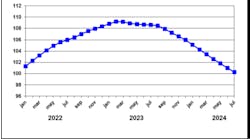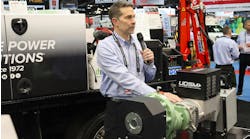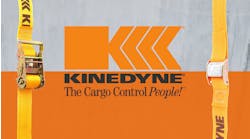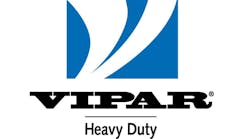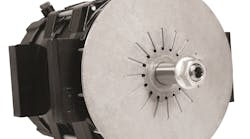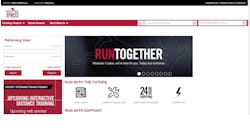The aftermarket parts industry appears to be gearing up for another wave of consolidations.
TruckPro Inc acquired several stores from Auto Wheel. FleetPride, the largest independent heavy-duty parts distributor in the US, purchased stores from Keller Truck Parts. Then there's TW Traction, the new heavy-duty parts network owned by Genuine Parts, which also owns NAPA and is in an aggressive acquisition mode.
Against that backdrop of formidable competition, how can the independent distributor effectively hold on to its market share in any given region, while also strengthening its customer base and adding value to the customer experience?
“One answer may simply be the inclusion or expansion of vehicle service,” said Joseph McAleese, president/CEO of Bendix Commercial Vehicle Systems, at a Commercial Vehicle Solutions Network (CVSN) meeting on September 20. “Many industry analysts cite service expansion as one of the primary means to prepare for the future. Independent distributors' share dropped eight percentage points between 1989 and 2006, which was the largest drop among parts distributors. Meanwhile, independent garages grew eight percentage points in the parts segment.
“While data shows that many fleet operators still do the majority of their own maintenance, the continuation of uncertain economics and other business pressures may change this in the foreseeable future as more fleets may begin to outsource their maintenance and repair. Plus, with increasingly complicated maintenance required on new engine platforms and developing technology, fleet owners may not have the time and knowledge to conduct maintenance and repairs at the same level as they once did before.
“Couple that with inadequate capacity to take on more repairs or maintenance jobs, and more fleets may make the determination to outsource. Why not try to pick up some of this business? Ask yourself, is introducing or expanding repair and maintenance operations a viable option for your business model and what will it mean to your plans for profitability and growth?”
Adding service bays
McAleese said that in order to compete in today's aftermarket business, the distributor must be able to hold its own against multi-location operations.
Can service bays be added to each location of the independent distributor? He said that while the investment may be significant at the onset, customers requiring repairs will inevitably appreciate the one-stop shopping experience and frequent the business when they need both parts and service.
“The service component is critical, as it will help support the parts business as customers purchase their needed parts at the same place they receive maintenance and repair work,” he said. “Plus, adding service to your portfolio of offerings could also help differentiate you from the colossal distributors such as NAPA, which currently does not offer service as an added value.”
McAleese said that adding service bays obviously also means acquiring qualified technicians.
“Maintaining a team of talented technicians is a critical element,” he said. “Industry-wide, there is a growing demand and shortage for highly skilled technicians.”
McAleese said the 2020 aftermarket outlook is being radically shaped by skyrocketing raw material prices, driven by steel, aluminum, and other commodities — and the result has been steel companies' decisions to break their firm contractual commitments by implementing 50% surcharges from one day to the next.
Other shaping factors:
-
The weakening US dollar.
-
The movement of some manufacturing from China to the United States, driven by cost concerns due to the changes in exchange rates, and the skyrocketing transportation costs for a container, driven by fuel, and global shipping capacity constraints.
-
In the past three to six months, there has been a collapse of demand for new medium-duty vehicles, which is likely an indication of future structural changes in the business models for our customers.
He said that despite all of this seemingly dreary news, there is a “somewhat contradictory bright spot” on the horizon, driven by basic economic fundamentals. Based on our continued US economic growth, the American Trucking Association is predicting substantial growth for trucking over the next decade. The organization's study, conducted by Global Insight, projects the overall truck population will increase by 44% between now and 2018. ATA projects the Class 6 to 8 population will increase by 32% during the same period.
“Despite the global economic volatility that is causing today's issues for all of us, it appears we're not only on the cusp of an industry recovery, but that we're also at the beginning of a long-term industry expansion,” he said. “Despite the current economic issues, it is a time of great opportunity, and a time to re-evaluate the strengths that will enable our growth.”
